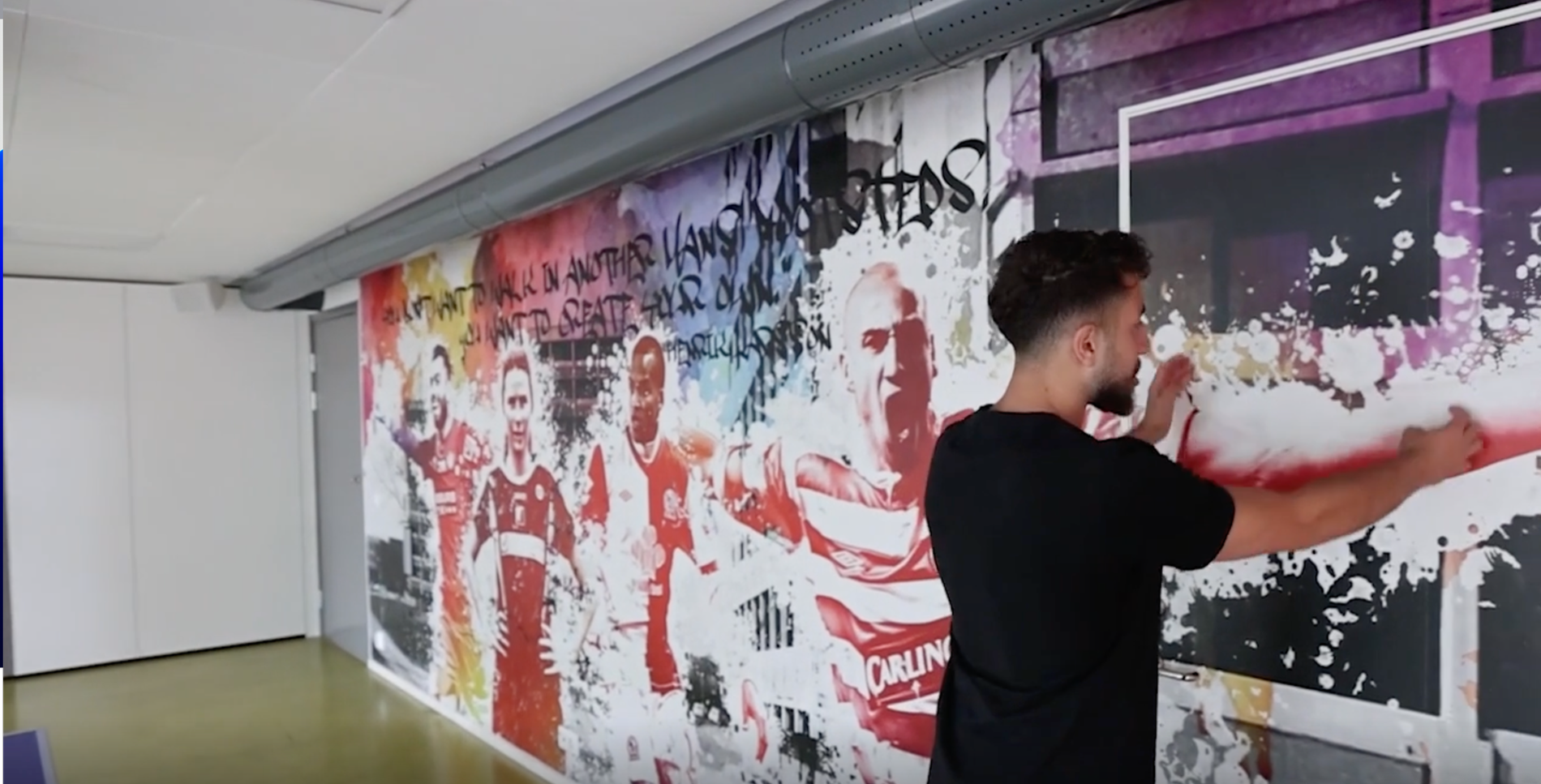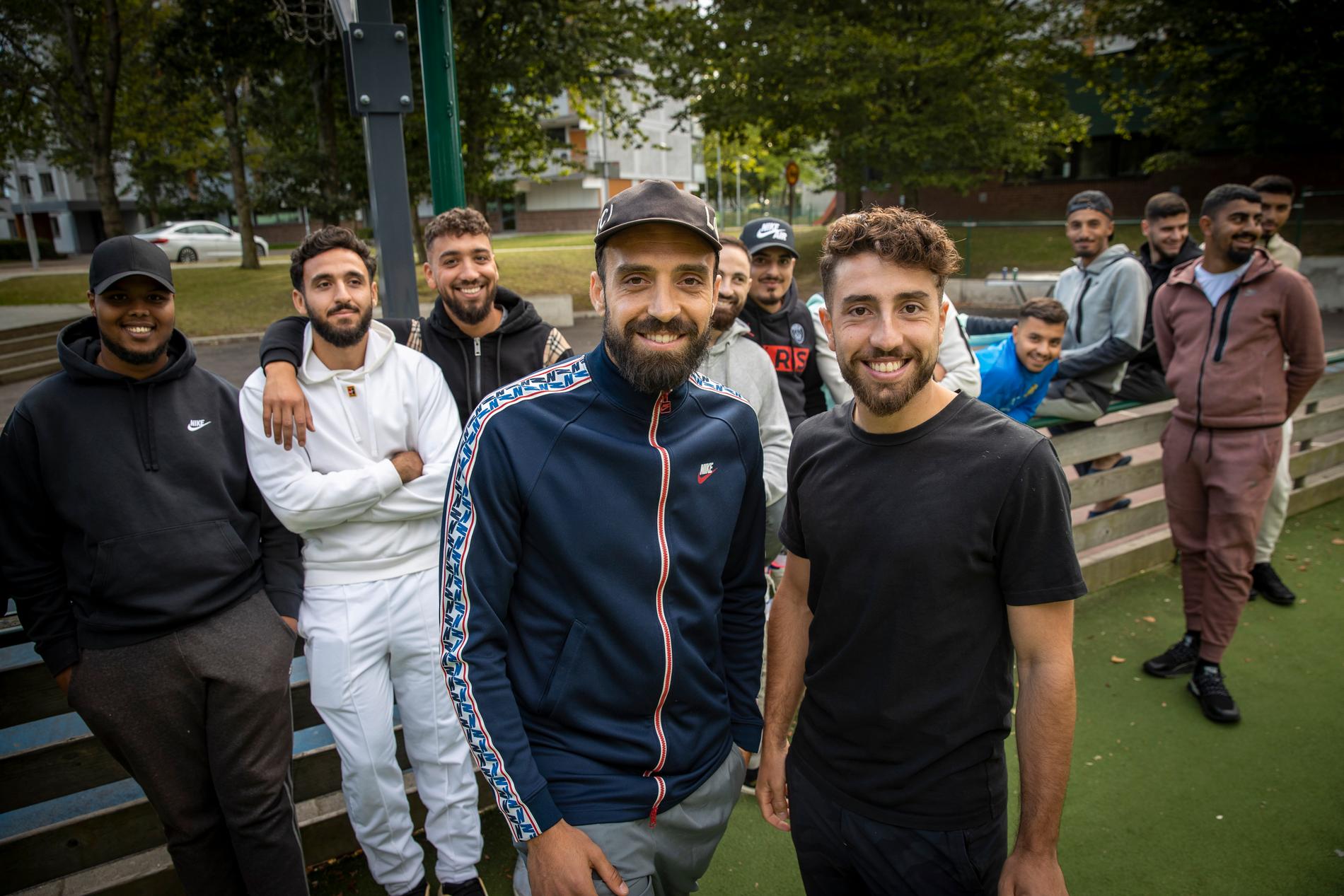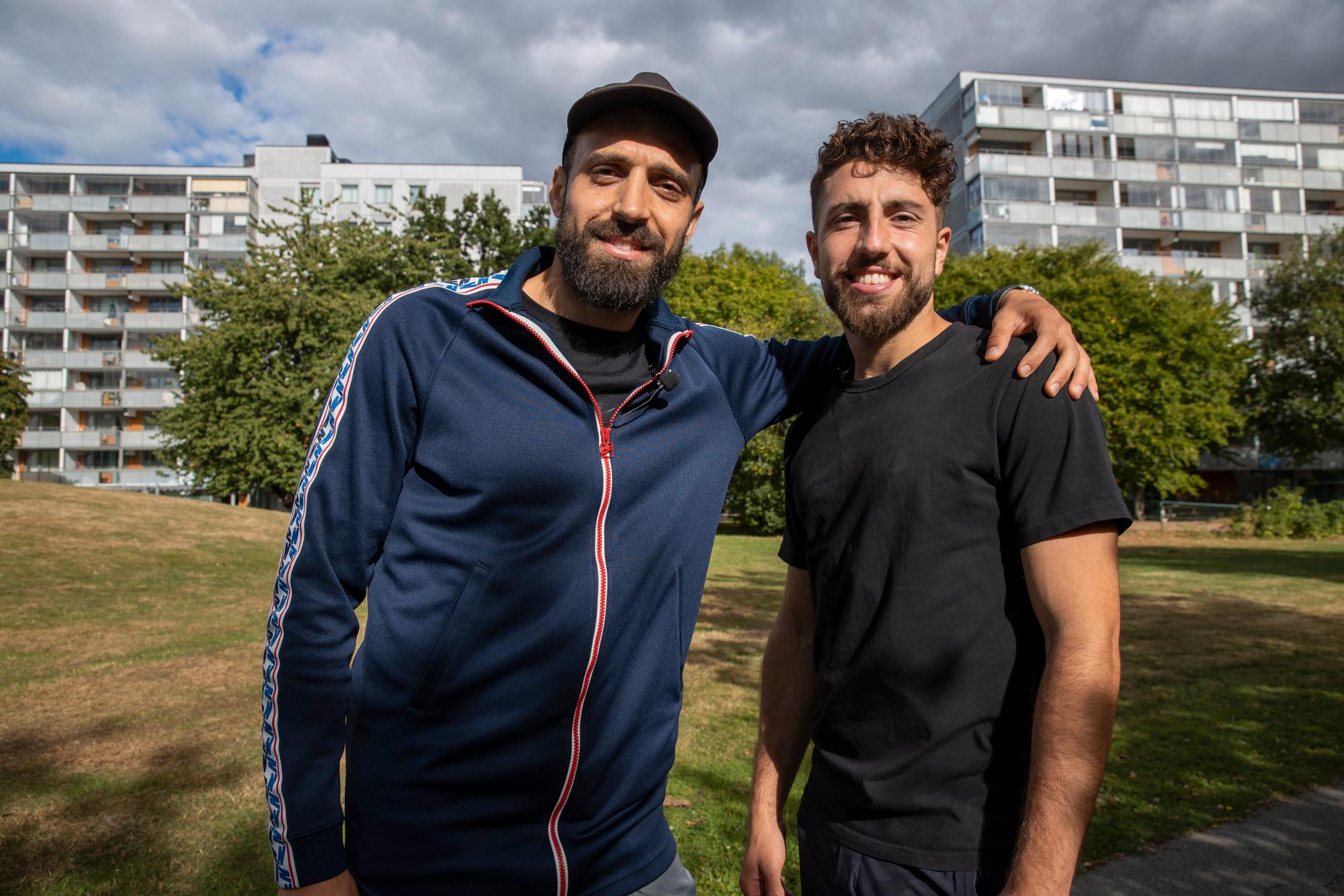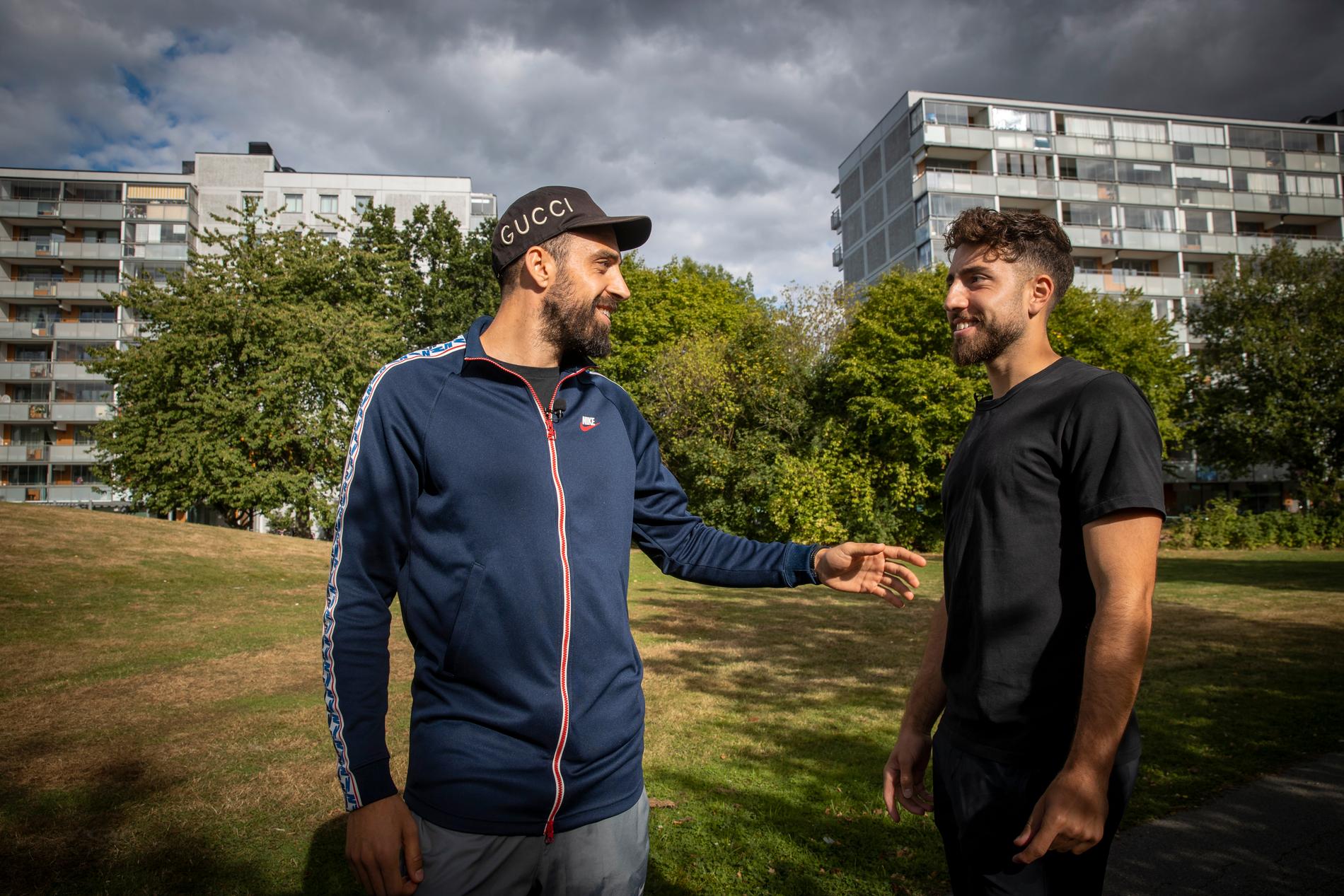This is the region that has produced the most elite players per capita
Nirlunda. In today’s Scania derby, cousins Mustafa Zeidan and Abi Khalili are facing each other for the first time.
Sportbladet brought them together at home in Närlunda – the million-dollar program area in Helsingborg that has probably produced the most elite players per inhabitant of Sweden.
It was great growing up here – a lot of community, a lot of love, a lot of football, says Khalili.
– It’s still a little bad because I’m not there yet. I’m still a player for the whole Sweden national team. I was going to be right there next to Henke, so he was cuddling me. Or maybe I’ll have an entire wall of my own.
Mustafa Zeidan smiles as he stands and points at the wall in the ground floor theme park at Närlunda 15.
On the wall are depicted Henrik Larsson, Abby Khalili, Imad Khalili, Martin Olsson, Markus Olsson, Erla Arnardottir and Ida Arnardetter – seven elite footballers who all grew up in Närlunda, the tiny Million Program area south of central Helsingborg with 1,300 residents built in early seventies.


So we’re talking about one of the all-time greats of Swedish football, the under-21 European champion, a former Swedish top scorer, a 55-time national team player, a former Premier League player and two elite players on the women’s team. Her sister (Erla) made 40 caps for Iceland.
Then Malmö FF’s summer success, Mustafa Zeidan, had yet to earn a spot on the wall. Nor did Somar Majid, who signed from Landskrona, where he succeeded in the Super Cup last year, to Helsingborg last winter but has since been injured.
– Sumer grew up at number 11, Mustafa and Imad and I at number 13 and Hank at number 17. Martin and Marcus lived in the lower houses there, Abe Khalili says.
It is the four nine-storey buildings and the numbers 11, 13, 15 and 17 that characterize Narlunda. They are positioned so that as many apartments as possible overlook Öresund. In recent years, it has been renovated and partly given new facades.
Zidane and Khalili are often here as the parents still live in Närlunda 13.
My parents live on the ninth floor, Imad is on the eighth, Mustafa’s grandmother and grandfather are on the sixth, my grandmother is on the fifth, our cousins are on the third, and Mustafa’s parents are on the second. Abby laughs, we occupied the whole house.
I went to preschool at Henke’s house
The idea was that Martin Olsson, Närlunda’s other MFF boy, would also be in for a reunion here. But the veteran left-back is one of Olsvenskan’s toughest players to hold.
Zidane says it’s easier to get (Barack) Obama than to get Martin.
Marcus Olson told how he and his twin brother used to run and call Henk to get autographs.
Who was your idol?
– Emad and Abi are my cousins, so I didn’t need to get any autographs from them. For me, meeting Martin and Marcus was even bigger when they were home from England. Then they asked a lot of questions, says Mustafa, who is 12 years younger than Börden Olsson and six years younger than Abbe.
“I was closer to Martin and Marcus in age, so Hinky was the thing for me when he was at home here,” says Abby.
We go to #17, where the Olson twins ran and hit at Henke’s.
– That was where the kindergarten was. This is where it all began, Zidane says.
But the question is whether it didn’t really start in a small football field in the basin a little further out in the yard. Now it is a multi yard with artificial turf, when my dad and Mustafa were growing up, it was asphalt ground.
Here they played tough spontaneous football matches, three against three or four against four, all evenings and weekends.
– I’ve spent a lot of time here. Mustafa says: Here you get the technical and mental side.
Jordan Larson never lived in Narlunda, but he was often here and played with Zidane when they played together at Hogburg as a teenager.


Growing up gave mental strength
Already in 2014, Sportbladet was here and reported on “Footbollfabriken” in Närlunda. Then the focus was on Abi Khalili and the football field. In one photo, he is standing in the square with about 25 young men from Närlunda behind him.
– I am there. Mustafa says: If I zoom in, I am standing behind the girl in the middle.
He was 15 years old at the time and was the young national team player who led the scoring league in the second tier and would leave Högaborgs BK in the summer to become a professional youth player for Aston Villa.
– The club’s greatest talent – ever, said Kenneth Carlson, Hogburg coach and intellectual at the time.
After only two years in England, Zidane returned to his homeland. Six years and a very crooked road after that, he was a huge hit at Allsvenskan.
Growing up here gave me the mental strength that allowed me to get through difficult periods in my career.
Närlunda, like most of Sweden’s millionaire program areas, has a bad reputation.
As in all areas, there are better and worse sides. We managed to avoid the bad side thanks to football, Abe says and continues:
– But it was great growing up here – so much community, so much love, so much football.
“Högaborg means everything”
Of course, Högaborg and Harlyckan, the sports field across from little Jordbodalen, played a crucial role for talents from Närlunda.
– Högaborg means everything, say both Zidane and Khalili.
– We had our stadium here and if we wanted to play on the grass we could go up to Harlyckan and play there. My boyfriend says, we had good conditions.
The Henke, Olson twins, and Khalili/Zidane cousins all grew up in Hogoburg, not the city’s big HIF. There they can bring football from the street.
– What was good for us was that you always had to do whatever you wanted in Högaborg. In the big clubs it is more controllable. At Högaborg you were allowed to continue to dribble and give space to make mistakes and fail. It made them dare to do more of late, says Khalili.
At Högaborg, they were never afraid to take players to older teams and let them develop at their own pace.
– When I was 13, I played with the 18-year-old team, and when I was 14-15, I played with the first team.
Then Högaborg was in the second division, and today they are in third place. As football is played less in Närlunda, as the football field becomes increasingly empty, fewer talents emerge from Närlunda, which means that the Högaborg nursery school is no longer thriving in the same way and the club has found it more difficult to assert itself in the league system.
– There are more cell phones, tik tok and the like now, says Abby, looking at the empty field.
When we pass the barbecue area between the high-rise buildings, some old gentlemen wave happily to the cousins
– In the summer, our older relatives took out a TV and hung it here and sat and watched our matches. They watched MFF and Mustafa a lot after that, before I signed HIF again. Abby says now they are looking at us.
What do they do in the derby?
-Maybe they hope they can both do something good for their teams, says Abe.
– For them, it probably does not matter which team will win, says Mustafa.
This would actually be the first time the cousins had met, at least since their spontaneous football days here in Närlunda.
– Mustafa says it was one of your dreams to play with or against Abby.
How then can so many good footballers have come from a place as small as Nerlunda?
It seems that no one has an answer to this question.
– We usually answer that because of the water here in Narlunda, the cousins laugh.
Perhaps one of the reasons is that there are role models so nearby?
– Henke showed the way. Then came Emad, Martin and Marcus. Then they thought “we can also be pros” and keep playing and playing, Abby says.
